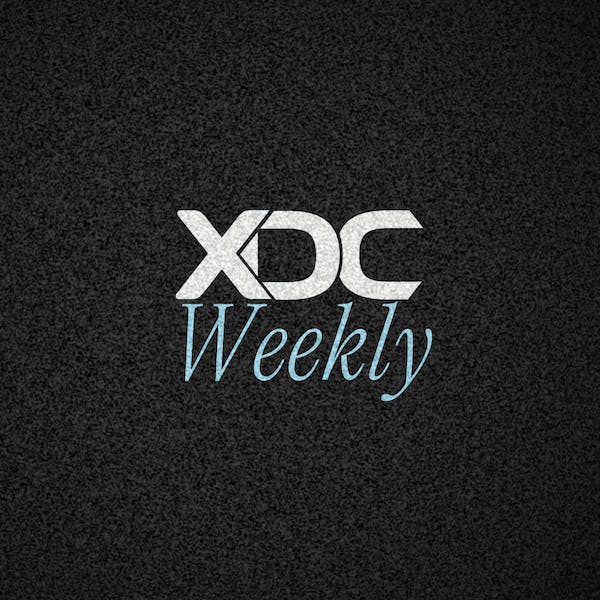There was a seismic shift in crypto’s fault line in April when the European Union passed its MiCA legislation on April 23, 2023. The sweeping set of regulations will bring much-needed clarity to crypto assets and blockchain technology.
While it may not come out in perfect, final form, the legislation is comprehensive enough to address regulatory ambiguity and get started with long-awaited legislative policies that will guide crypto-oriented businesses and consumers. In enacting this legislation, the EU recognizes how crypto tokens function as legitimate utility assets and investment vehicles, signaling the EU’s confidence in the promise of blockchain technology to address real world problems.
What is MiCA?
The Markets in Crypto Assets (MiCA) regulation is a broad and comprehensive set of articles that focuses on the offering and marketing of crypto assets in the EU, across all Member States. This legislation intends to supercede any prior legislative acts for certain crypto assets and eliminates the need for such one-off legal acts.
MiCA also addresses e-money and asset-backed tokens as well as anti-money laundering (AML) and data security. Other highlights of the legislation include:
Required disclosures for crypto assets;
Stricter rules on stablecoins;
Ability for crypto businesses to “passport” their license with minimal paperwork across all 27 EU countries;
Benefits to small-to-medium-sized businesses (SMEs), giving them better access to financing; and
The legislation should result in a cheaper, faster, and more efficient payments system, including cross-border payments. An interesting component of MiCA is the requirement of a published white paper prior to the public issuance of a crypto asset. That gives any potential purchaser — consumer or institution — the ability to perform sufficient due diligence on an investment.
Is MiCA going to change the crypto world?
In short, yes. Several factors in this legislation will contribute to a regulatory environment that won’t stifle entrepreneurial innovation in crypto and blockchain technology. To start, this is a large-scale legislative approach in a center of major economic activity, and it creates a path for other jurisdictions to follow suit. Other legislatures will make their own rules, according to their needs and desires for consumer protection. But make no mistake, MiCA is first, and it is a big deal.
Second, this regulation states as one of its organizing principles a need for user confidence in crypto assets. Specifically,
The absence of an overall Union framework for markets in crypto-assets can lead to a lack of user confidence in those assets, which could significantly hinder the development of a market in those assets and lead to missed opportunities in terms of innovative digital services, alternative payment instruments or new funding sources for Union companies . . .
This is one of the most hopeful and noteworthy passages in any regulation so far. For a government to outwardly embrace the need for legislative action that protects not only blockchain innovation but also crypto-assets, specifically, demonstrates a strong and forward-thinking leadership move.
Third, by passing this legislation, the EU is ensuring blockchain technology and its corresponding products and services are more accessible to individuals and entities simply by establishing the rules of the game. It is a necessary starting point.
Users and developers of the technology will benefit from MiCA’s defined framework. They can conduct business with confidence as blockchain technology provides a basis for long-term benefits for many different types of projects, including crypto assets.
Consistent with its nature, the EU has to set down regulations. There are 27 countries in the EU. Since its inception 30 years ago, the Union has had to figure out how to blend policy across all those jurisdictions, and that compels them to enact legislation that is world-leading, as is the case with MiCA. Their efforts can only stand to benefit other large and small jurisdictions globally by example.
We want regulation!
Meanwhile, many parts of the world are desperate for regulations around crypto assets. The US, in particular, sorely needs positive action in this area. The Securities and Exchange Commission (SEC) — which has held off Winklevoss Capital Management’s application for a Bitcoin spot Exchange-Traded Fund (ETF) since 2013 — and the Commodities and Futures Trading Commission (CFTC) continue to dicker over cryptocurrencies as securities or commodities. More recently, the SEC spoke loudly through two major lawsuits. It filed 13 charges against Binance entities and its founder, Changpeng Zhao, alleging Binance operates unregistered exchanges, broker-dealers, and clearing agencies; misrepresents trading controls and oversight on the Binance.US platform; and conducted the unregistered offer and sale of securities.
The same week in June 2023, the heavy-handed SEC filed charges against Coinbase for operating as an unregistered securities exchange, broker, and clearing agency, among other charges. How does that reconcile with the SEC approving Coinbase’s IPO in April 2021, a time when Coinbase operated a cryptocurrency exchange?
Admittedly, the SEC attests that congress "painted with a broad brush" when it comes to securities laws. However, regulation cannot turn a blind eye to the unique properties and adoption lifecycle of this new technology. The Howey framework was established in 1946 to determine what constitutes a federal security. Elements of decentralization and digital asset utility have contributed greatly to the adoption of these modern technologies and may undermine aspects of how the Howey Test applies to digital assets - factors not considered in 1946.
In addition, regulators have acknowledged other factors beyond Howey. In William Hinman's infamous 2018 speech on regulation for cryptocurrencies, he addressed how decentralization might impact securities analysis on digital assets.
While the SEC seems only willing to regulate through enforcement thus far, the endless delays in legislation and rule-making will continue to discourage innovation and thwart user confidence in blockchain technology in the US.
The US would benefit from enacting legislation or setting clear rules that attract and retain talent fluent in the language of the internet and the emerging Web3 economy: code.
MiCA provides scaffolding to encourage talented entrepreneurs and blockchain innovators to conduct business, and it invites dialogue between regulators and industry experts to understand the nuances of the industry. This landmark legislation was formally signed into law on May 31, 2023 and will likely be published in the EU’s official journal this month. The provisions of the new law will take effect 12 -18 months later, in 2024.
It is an amazing opportunity for a shift in thinking and hopefully a dramatic pivot in how regulations are looked at — not to be feared but encouraged as a means to carry forward in an age of digital assets and commodities.
So, who’s next?
There is a notable contrast between other countries and their approaches to crypto assets:
The UK announced in February that it had a plan (consultation) to regulate crypto assets. The feedback period ended on April 30, and the Financial Conduct Authority is considering those responses and will issue its own response for legislative consideration. The consultation builds on previous proposals and introduces new design features, such as data reporting and consumer protection.
In Singapore, it is legal to own and exchange cryptocurrencies, and the Payment Services Act in 2019 defined crypto as a medium of exchange. Its central bank, the Monetary Authority of Singapore (MAS) has regulatory authority over the offer and issue of cryptocurrencies. It is focused on growing digital asset capabilities, managing the risks in the crypto ecosystem, and generally being adaptive, evolving and consultative in the fast-moving space. Singapore has a wholesale CBDC that is used primarily in cross-border settlements.
Japan regulates crypto assets (cryptocurrencies and utility tokens) according to their functions and uses under the Payment Services Act. Security tokens representing shares, bonds, or fund interest in tokens are regulated under the Financial Instruments and Exchange Act. An amendment of the Banking Act, the Payment Services Act, and Trust Business Act will be enforced starting in June 2023 and introduces a regulatory framework with banks, fund transfer service providers, and trust companies as issuers of stablecoins.
Japan’s SBI VC Trade, recently added the XDC Network to its platform, bringing the XDC ecosystem to the country. Japan is a critical hub for international trade with multi-trillion yen trade finance market. The XDC Network’s efficiencies — improved transparency, traceability, and reduced costs — will work to streamline this sector.
Hong Kong announced on May 23, 2023, that it will soon allow operators of virtual asset trading platforms to begin serving retail investors. The announcement came from the Securities and Futures Commission (SFC) and, while there have been no approvals for this service so far, the guidelines become effective in June 2023. This is an instance of a regulatory agency green-lighting an investment service with set regulatory requirements (including consumer protections) for licensed platforms.
IOSCO and The World Economic Forum Advocate for Coordinated Regulation
The International Organization of Securities Commissions (IOSCO) offers a more heartening outlook, regulatorily speaking. Recognized by the G20 and the Financial Stability Board (FSB) as the global standard setter for the securities sector, IOSCO continues its policy-focused work on crypto asset markets and activities for its membership. Its 2023-2024 board-prioritized work program includes assessing and responding to risks associated with crypto and digital assets and decentralized finance.
The IOSCO board issued a policy recommendation consultation report on May 23, 2023, for crypto and digital assets. It includes 18 recommendations in six key areas, including:
Conflicts of interest arising from vertical integration of activities and functions;
Market manipulation, insider trading and fraud;
Cross-border risks and regulatory cooperation;
Custody and client asset protection;
Operational and technological risk; and
Retail access, suitability, and distribution.
This important work applies pressure to IOSCO membership — 234 members, representing 95% of the world’s securities markets. Like MiCA, it demonstrates constructive worldwide leadership in crypto asset regulation.
In addition, a report issued May 25, 2023, by The World Economic Forum (WEF), Pathways to Crypto-Asset Regulation: A Global Approach, addresses the fragmented regulations and differing classification of crypto assets across 20 countries and how the inconsistency hampers global collaboration on crypto asset regulation. It acknowledges the varying ecosystem maturities in different jurisdictions, evolving use cases, and the capacity of regulators as contributing factors. The report encourages a principle-based approach and an exploration of alternative regulatory pathways as a means to a globally coordinated system for crypto asset regulation. We even see today how members of the WEF’s Global Innovators, such as Tradeteq, are executing on plans to leverage crypto assets and blockchain technology for unique use cases such as asset securitization.
People have grown weary of the “Wild West” mentality that has plagued crypto since its earliest days. With exchange failures over the last year adding to a prolonged crypto winter, regulations like MiCA can’t come soon enough — not to bring stifling oversight via an iron fist, but rather to provide the much-needed framework for conducting business in this new market, who’s staying power seems obvious at this point.
Next Read: Ahead of the Curve: Celebrating 4 years of the XDC Mainnet

